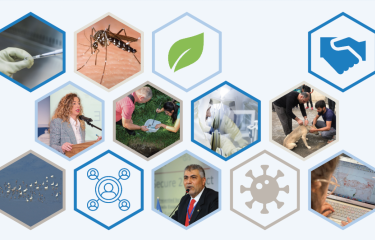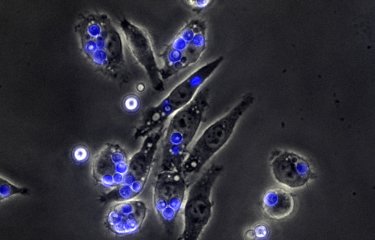Antibiotic resistance is considered by WHO to be "one of the most serious threats to global health, food security and development". In Cambodia, the misuse of antibiotics is a known phenomenon, but there is little data on microbial resistance in the absence of a surveillance system. A study by the Institut Pasteur du Cambodge assessed the frequency and characteristics of extended-spectrum beta-lactamase producing enterobacteria (ESBL1) over a four-year period.
"When I arrived in Cambodia in 2012," recalls Dr. Alexandra Kerléguer of the Medical Biology Unit of the Pasteur Institute of Cambodia, "I was surprised to see in the urine of Cambodian patients a lot of resistant bacteria, with a frequency much higher than that observed in France”. The Institut Pasteur du Cambodge then decided to set up a surveillance of resistant enterobacteria: a study was carried out on the basis of data from all samples (blood, pulmonary, stool, pus, genitourinary and other bodily fluids) collected in Calmette and Choy Ray hospitals or from patients referred directly and tested between January 1, 2012 and December 31, 2015, in the microbiology unit. In total, more than 10,000 samples were analyzed.
The results, published by the International Journal of Infectious Diseases show rising ESBL rates in Cambodia: the proportion of enterobacteria producing broad-spectrum beta-lactamases increased gradually from 23.8% to 38.4% during of the study period. ESBLs were detected in 42.7% of Escherichia coli strains and in 33.7% of all isolated Klebsiella pneumoniae strains. The proportion of ESBL-E.coli increased significantly from 28.9% in 2012 to 48.2% in 2015.
"The increase of these resistant bacteria can lead to a therapeutic impasse", worries the biologist Alexandra Kerléguer who adds that "since then appeared bacteria resistant to carbapenems, antibiotics used against certain resistant bacteria, that we did not see in 2012 ".
Another worry, according to the biologist coordinator of the study, "Among these BSLE-producing bacteria, for E. coli, many patients were community patients living in cities. Because these bacteria are predominantly living in the digestive tract, that means they can spread throughout the population. "
The challenge is therefore to raise awareness of the problem for doctors, pharmacists and patients, in a country where antibiotics are very often used automatically, available without prescription and sometimes counterfeit. These results argue for the establishment of a comprehensive system to prevent the emergence and transmission of ESBL, particularly in developing countries such as Cambodia.
1 The first broad-spectrum beta-lactamase producing organisms (ESBL) appeared in the 1980s. They are enzymes that make bacteria insensitive to the action of antibiotics in the beta-lactam family such as penicillins and first, second and third generation cephalosporins. ESBLs are produced by enterobacteria, microbes mainly present in the digestive tract.
Source: Beta-lactam resistance among Enterobacteriaceae in Cambodia: The four-year itch. Caron Y, Chheang R, Puthea N, Soda M, Boyer S, Tarantola A, Kerléguer A. Int J Infect Dis. 2017 Nov 11;66:74-79. doi: 10.1016/j.ijid.2017.10.025.







